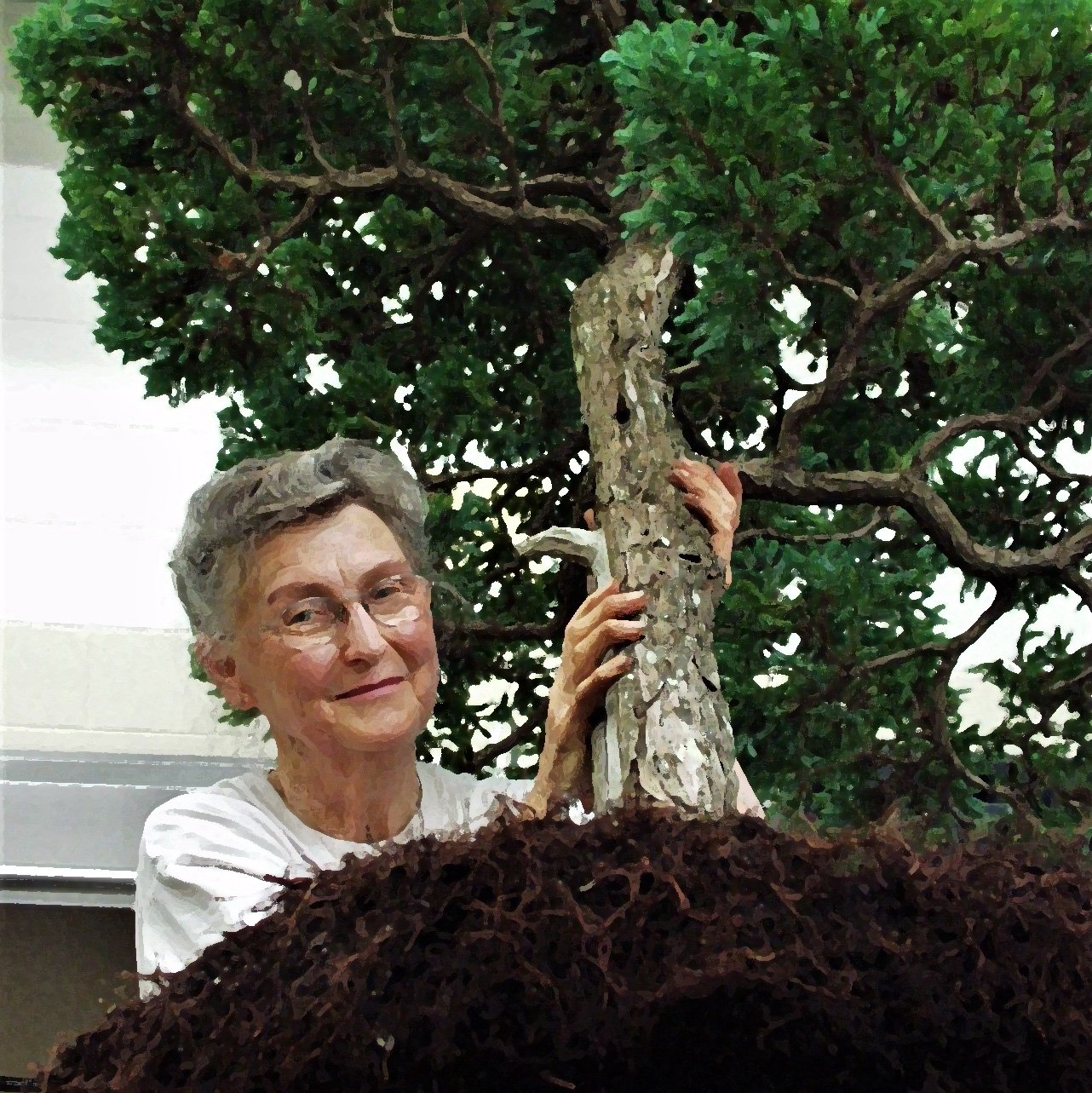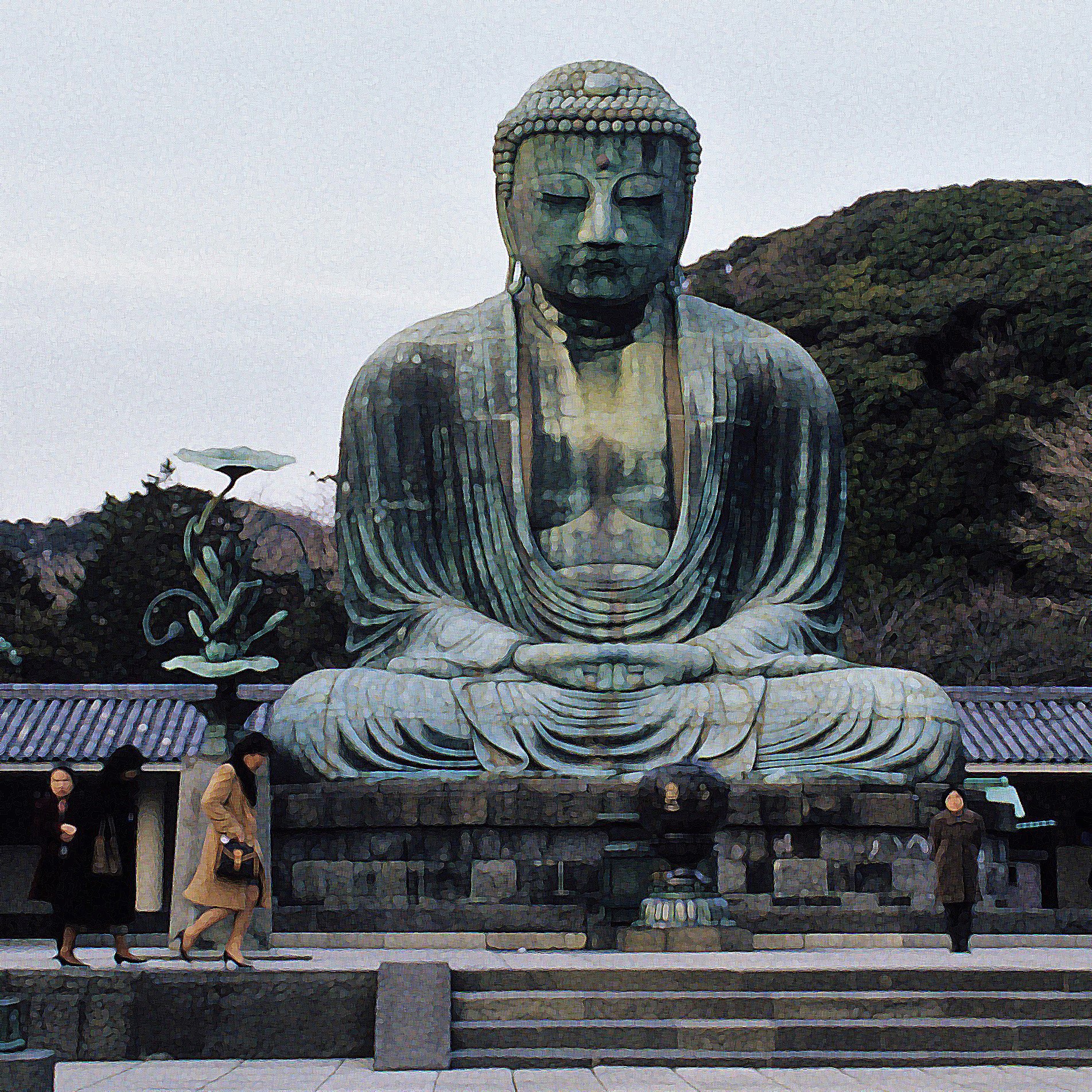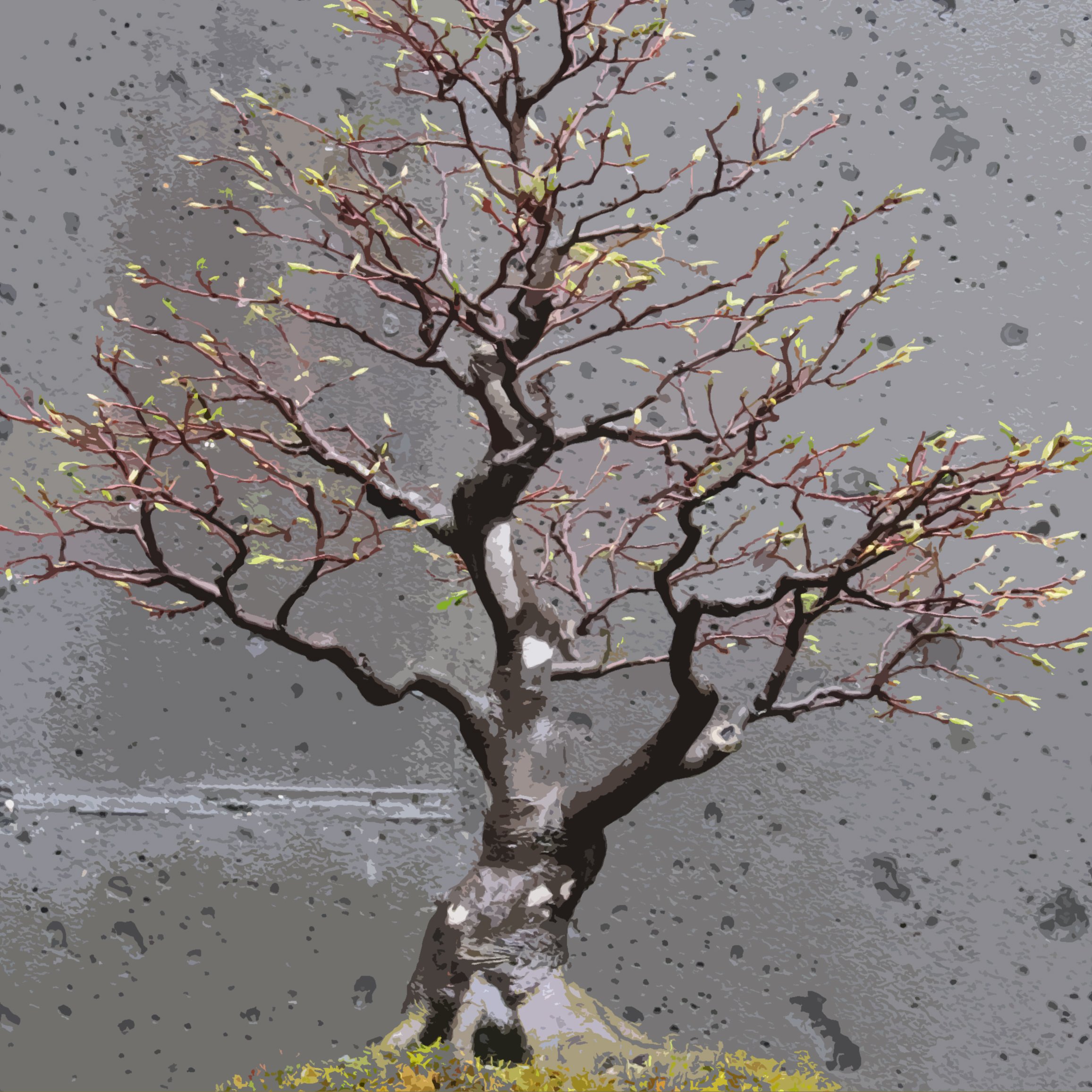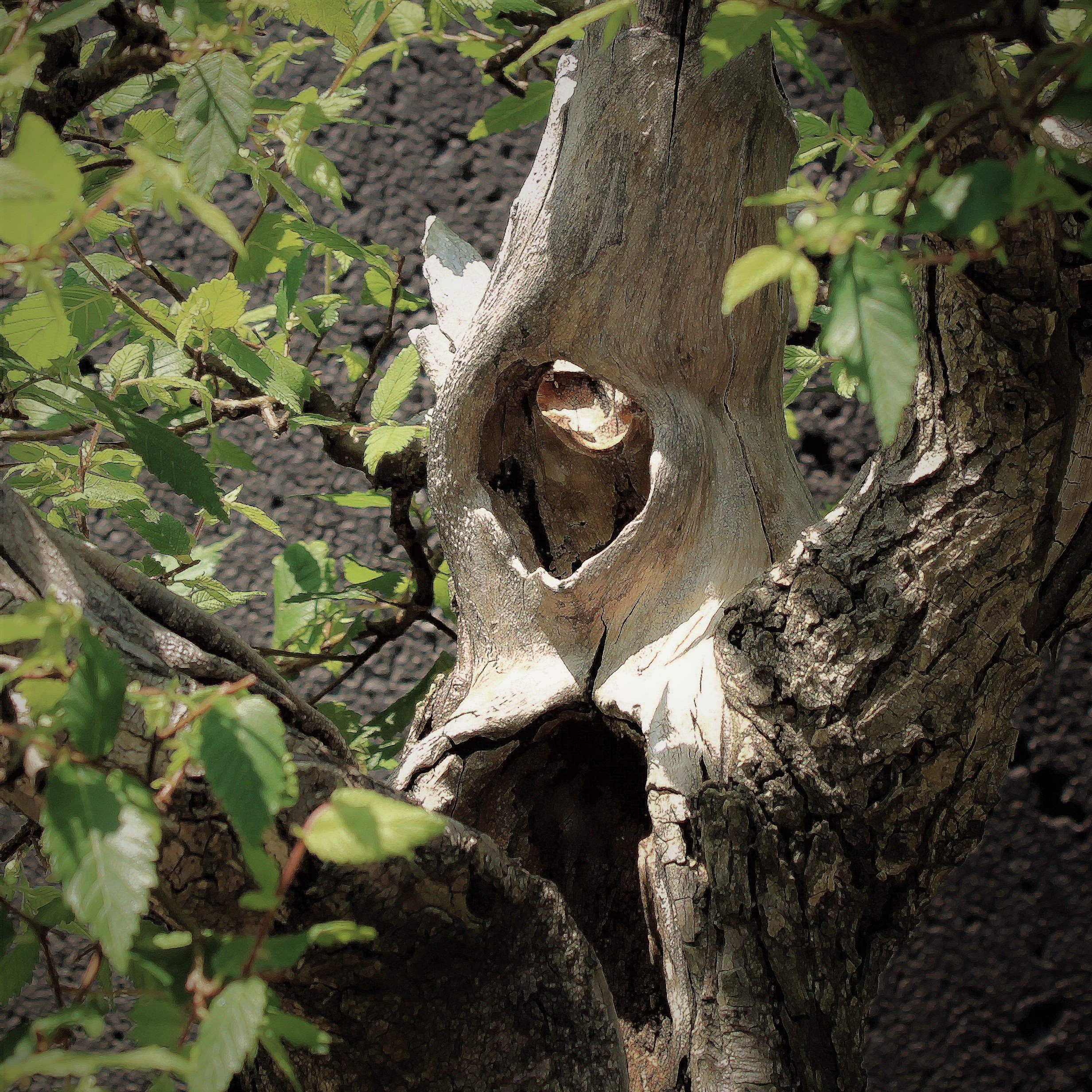It's the detail work, the non-glamorous, time-consuming, tediously repetitive labor done with tools like tweezers and a dental pick, that really elevates the quality of a bonsai and makes it shine. Virginia went about her business with a seriousness of purpose and unremitting focus that belied any suggestion the work was menial.
Read MoreIn 2018, eighteen years after being received in donation, I decided the time had come for this specimen to have its public debut and it was chosen to be the logo tree for the twenty-third Carolina Bonsai Expo. The unintended effect of the dangling branch revealed itself when I was making the Expo logo image. Suddenly what I saw before me took on a certain shape so clearly visible that once seen I couldn't un-see it. It was the image of a rearing horse.
Read MoreNaming March in honor of a mythological being who embodied both growth and devastation is entirely appropriate. This month may see the first tender young sprouts of green life emerging from fertile soil, but it may also see those same sprouts freeze and turn into dark brown slime a few days later. March is fickle. What's behind the door — the lamb or the lion?
Read MoreNow, twenty-five years later and with the advantage of hindsight, there are certain elements of my Japan experience that I recognize as having had more importance than previously acknowledged. It is time to shine some light on these matters.
Read MoreFrom Ryoanji we walk another fifteen or twenty minutes to Kinkakuji Temple, another truly outstanding site. The gardens are beautiful, but the real highlight is a golden temple, three stories high, sitting above a large pond that reflects the image. It's fantastic, dreamlike. I shoot a million pictures, but it's unlikely that I capture on film the shock of seeing such an amazingly wondrous thing for the first time.
Read MoreEven after years of pouring through books and magazines studying countless pictures of the great aged bonsai from Japan, nothing could have prepared me for the marvel of standing before the living trees themselves. All of them were apparently in perfect health, meticulously groomed, planted in exquisite containers, and everything I saw looked old.
Read MoreA certain ephemeral effect that occurs only once every year can often be observed in February, especially toward the end of the month and in lower elevations. It is a small thing, a quiet thing, a detail that has to be looked for if it is to be noticed. But it is a heartening thing, a promising thing, a reminder that life ebbs and flows and the flowing is soon to begin.
Read MorePlans are all very well and good; I have made a few myself. Once you get underway your plan may or may not hold up to unfolding events. Unanticipated complications often arise, and then you face a choice of whether to stick to the plan or go with the flow. I remember reading that General Custer had a plan at the Little Bighorn, and he insisted on sticking with it even when reports started coming in that events on the ground were going awry.
Read MoreRemember the adage that goes: "As the twig is bent so the tree is inclined"? It's an old saying, originally penned by poet Alexander Pope in 1732, and in full goes this way: "'Tis education forms the common mind, Just as the twig is bent the tree's inclined."
Read MoreAmerican hornbeam lacks the gaudy gene. It is an admirable tree species with four seasons of visual interest, but its appeal is understated and its virtues are so soft spoken that they are easily overlooked. I can't say I took much notice of American hornbeam either, until bonsai gave me reason to focus on it.
Read MoreJanuary is wintertime, generally cold and sometimes bitterly so, but there is something fresh and clean in the crisp austerity of a cold January day. This is the heart of the dormant season for temperate plants, but it is by no means a dull or dead time of year.
Read MoreI was traveling with my friend John Geanangel, and we decided we’d make the best of the situation as long as we were already out there, so we toured around some. Our original plans were centered on trees so we kept that as the theme of the road trip.
Read MoreBonsai can be a vehicle for staying consciously connected to the natural world. It is a discipline, for those who practice it as such, that broadens awareness of the greater workings of life by focusing attention on a small but living piece of nature.
Read MoreThe challenge with this pine was not only to give it a new, more dynamic design, but to deal with an excess of long, leggy branches. A good many branches were removed in the demonstration, and others were intentionally killed but left in place on the tree as deadwood. This was the fate of that problematic lowest branch, which had been chronically weak from being in a disadvantaged position. Lack of light will no longer be an issue for that branch!
Read MoreBev cared deeply about bonsai and he recognized a situation was developing at this new public garden in Asheville that could have a far-reaching positive effect on the course of bonsai development in his home state — and maybe beyond. With our bonsai program only beginning to take shape, there was no guarantee it would ever amount to anything. Bev did what he could to ensure its success.
Read MoreDecember's toil sets the stage for all that must be done in the next few months to prepare for another year of beauty and abundance. During the growing season no effort is spared to keep the garden looking lovely, and during the dormant season the goal is just the same. It is a different sort of lovely than you might find in May or July, but those of us who appreciate living in a temperate zone find serenity in its structural simplicity.
Read MoreWithout the benefit of enormous size to indicate great age, most people would not necessarily recognize an old tree. It is another matter altogether to believe a tree no taller than yourself, with a trunk diameter no greater than the size of your leg, might be several hundred years old or more. Yet these trees do exist. Their size may not announce their age, but close observation of their appearance can reveal them.
Read MoreWhen I found a lone American elm growing in a small plastic pot among the excess plants in the Arboretum's nursery, it had immediate appeal. The idea of making a bonsai out of a species so well known and badly troubled seemed a novelty, and at the very least it gave me the opportunity to protect this one individual tree. Though nothing about that particular elm, little more than a stick in a pot, suggested it would in any way make a good bonsai.
Read MoreThe telling of this particular tree's story should make one point plainly clear: It takes time to build a bonsai. Woody plants, even vigorous growers like American elms, develop at a rate most people find rather slow. On top of that the ability level of the person attempting to do the training of the plant has to be taken into account, and then come the hazards of chance along the way. Many plants are aimed for a bonsai future, but few actually make it.
Read MoreNovember is a busy month in the world of bonsai here at the Arboretum, and for us the activity still has everything to do with the impending arrival of winter. Bonsai are still on display in the garden at the start of the month and will remain so until sometime near the month's end. Then the benches will be cleared off and the bonsai put into their winter quarters.
Read More


















